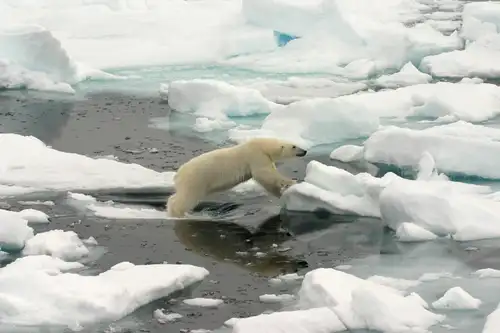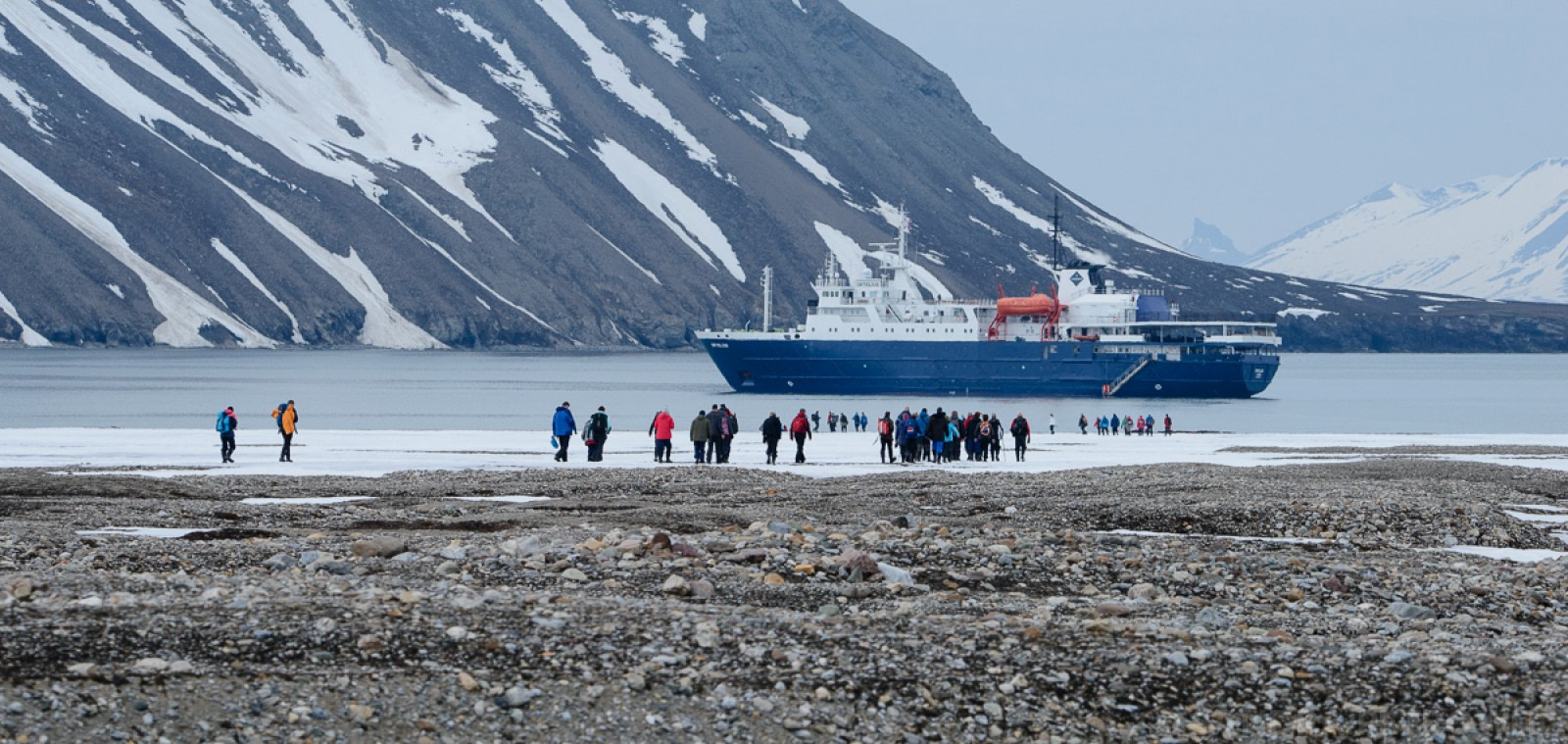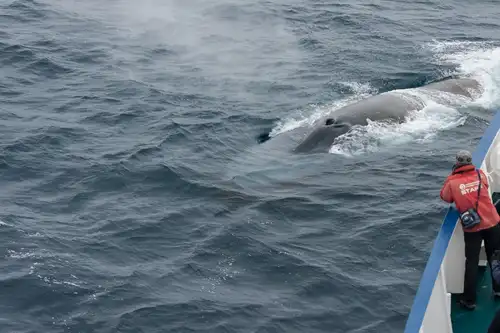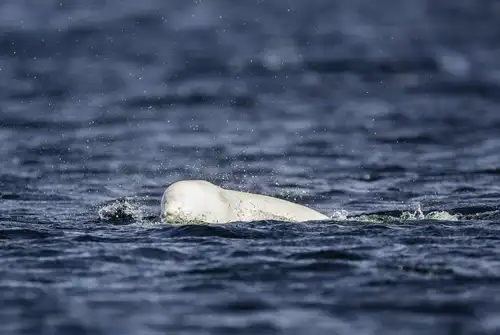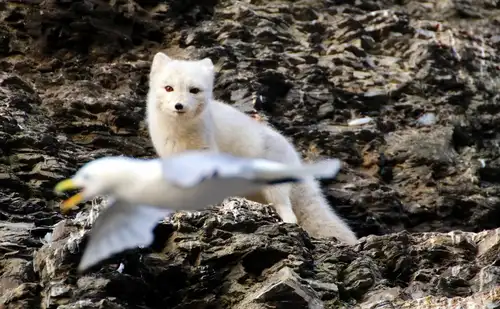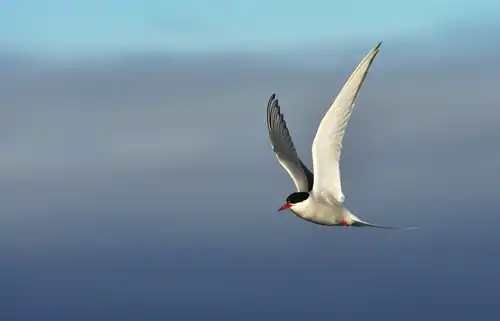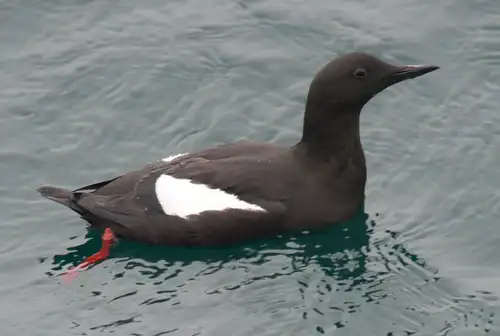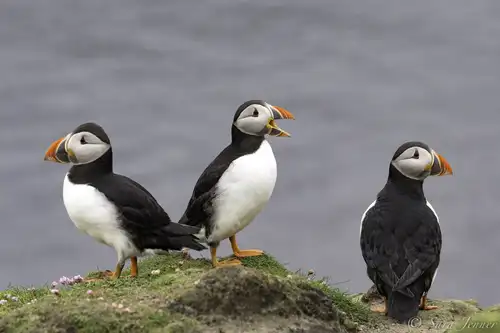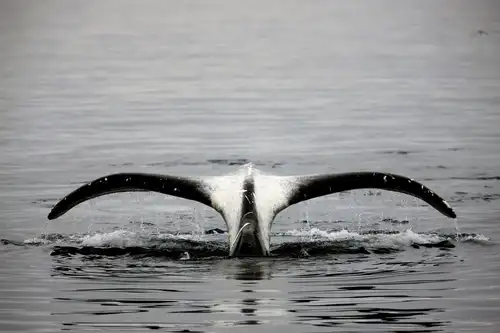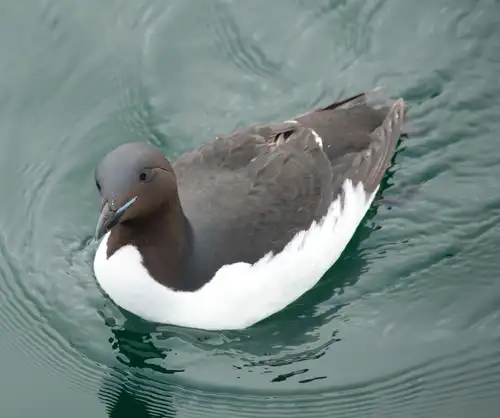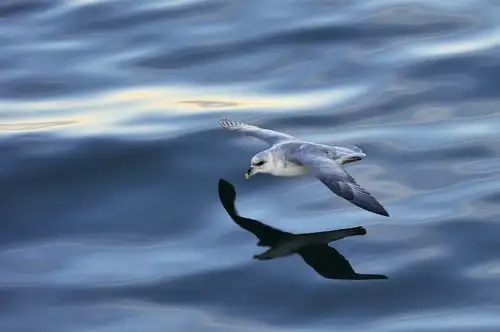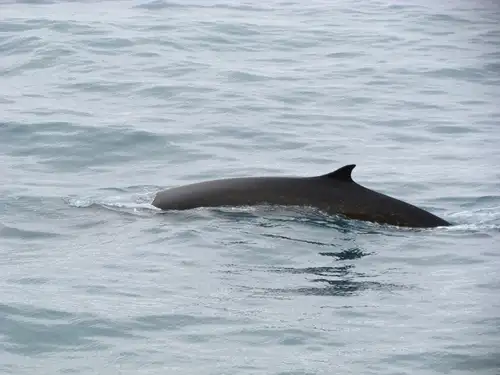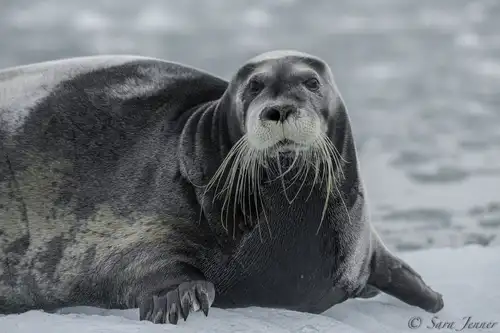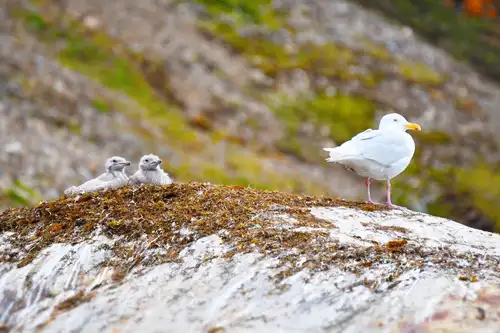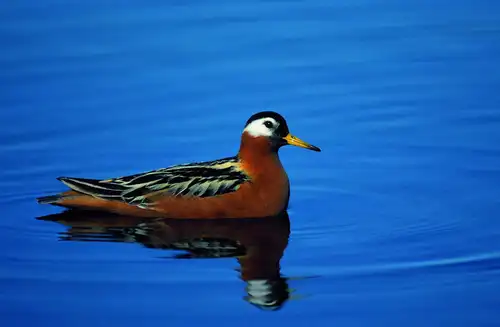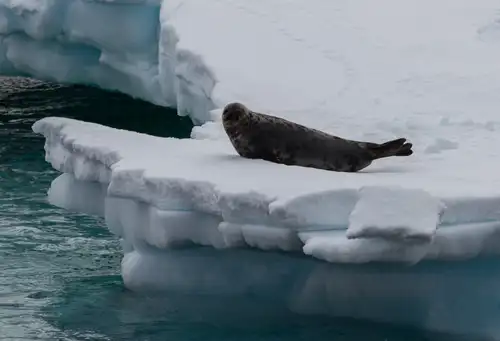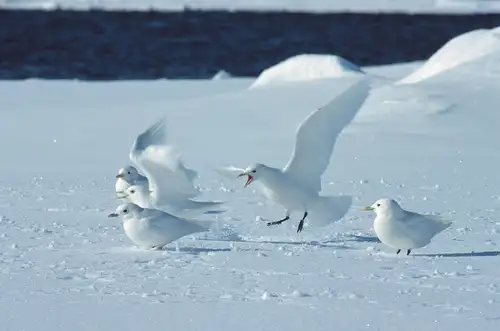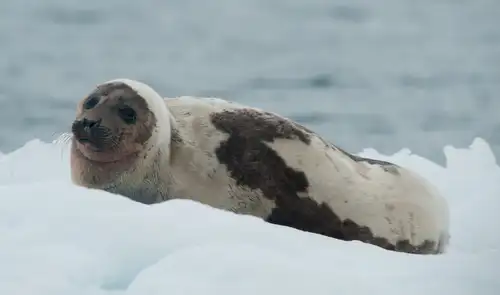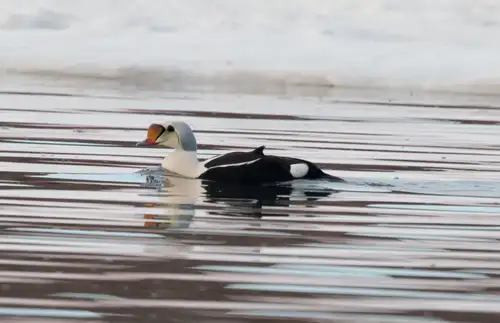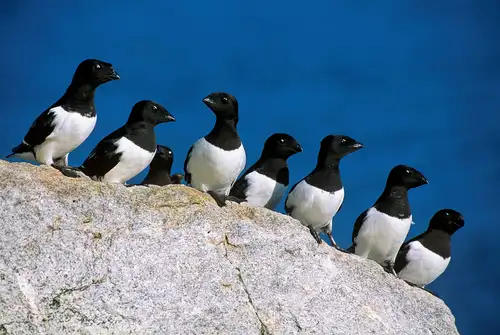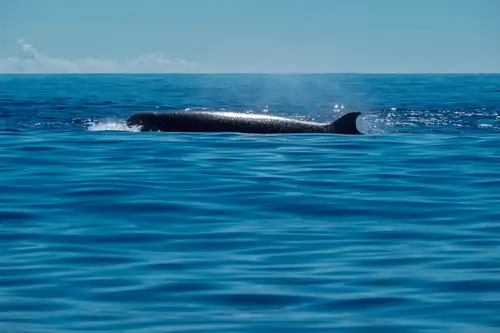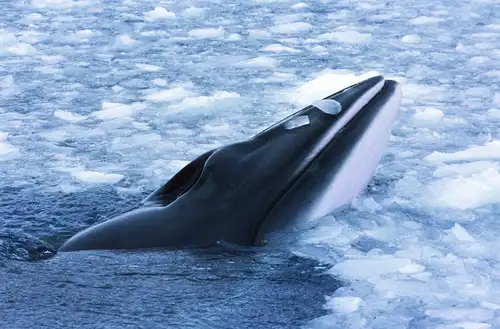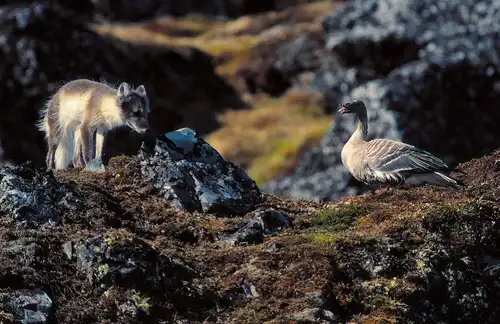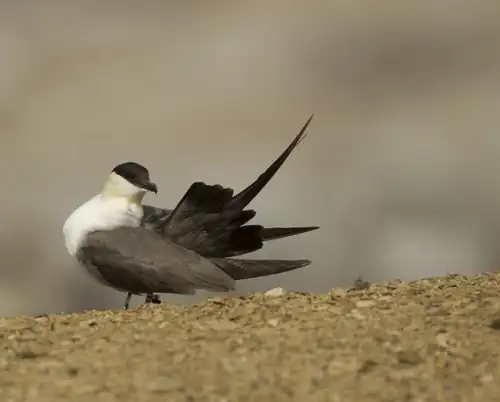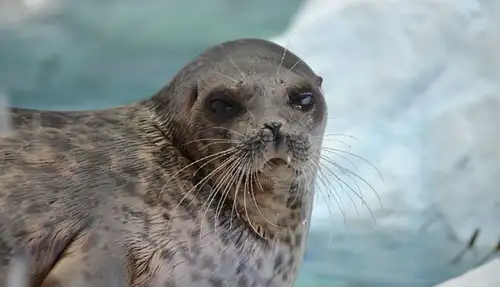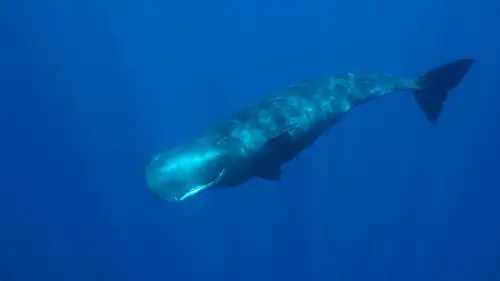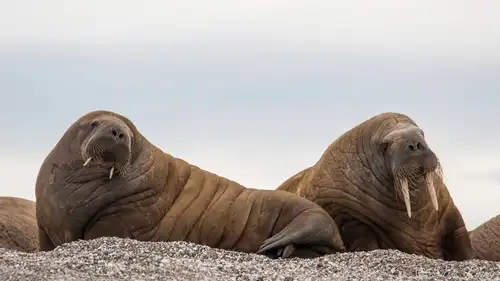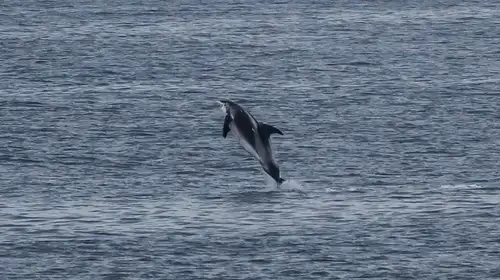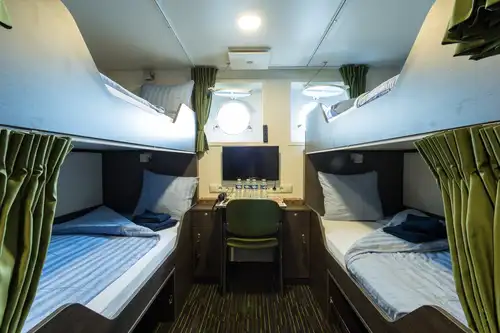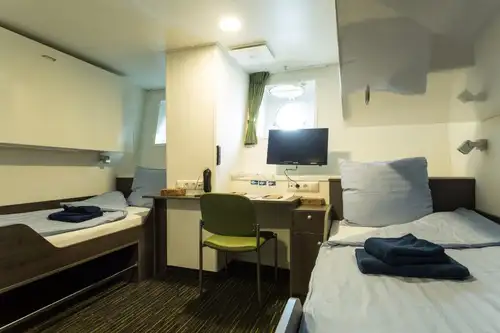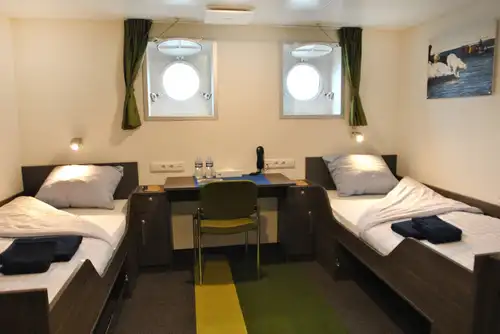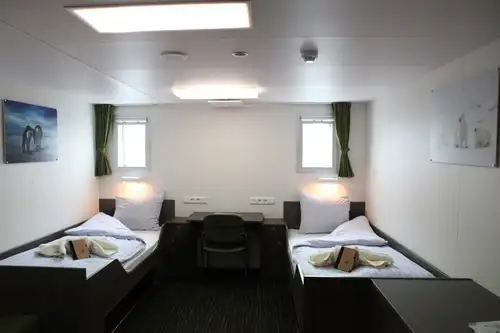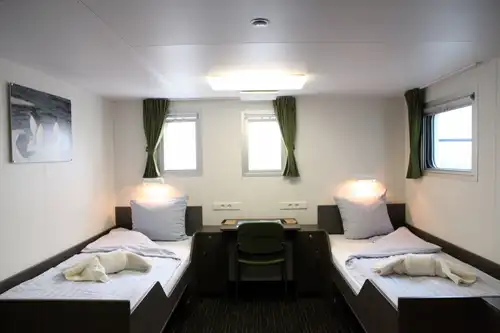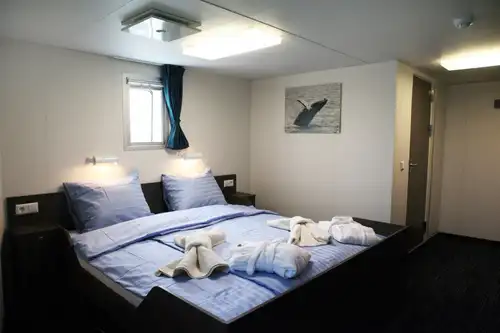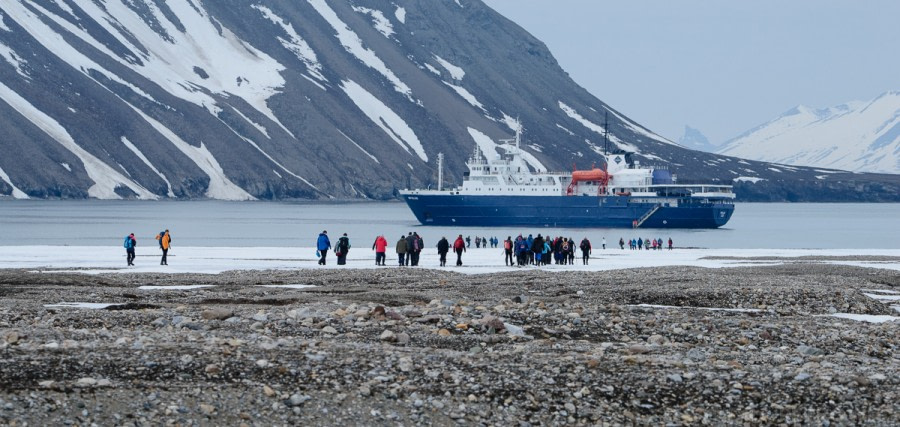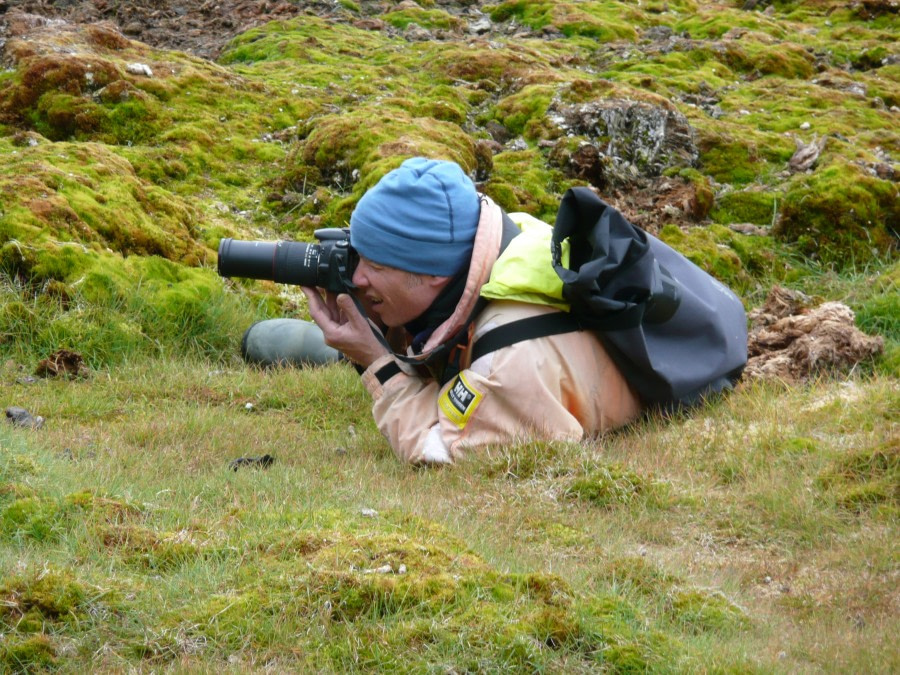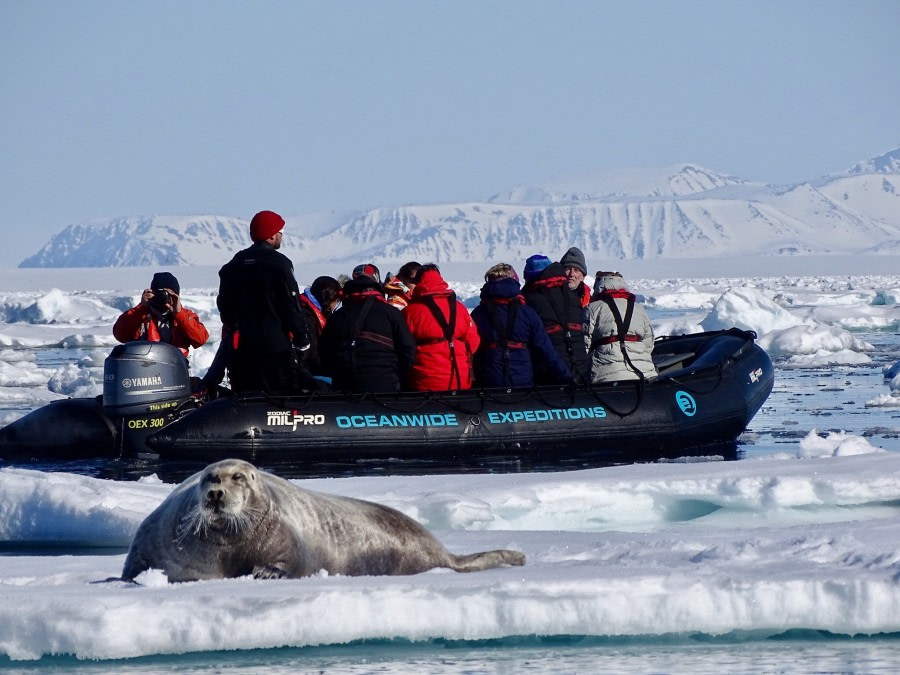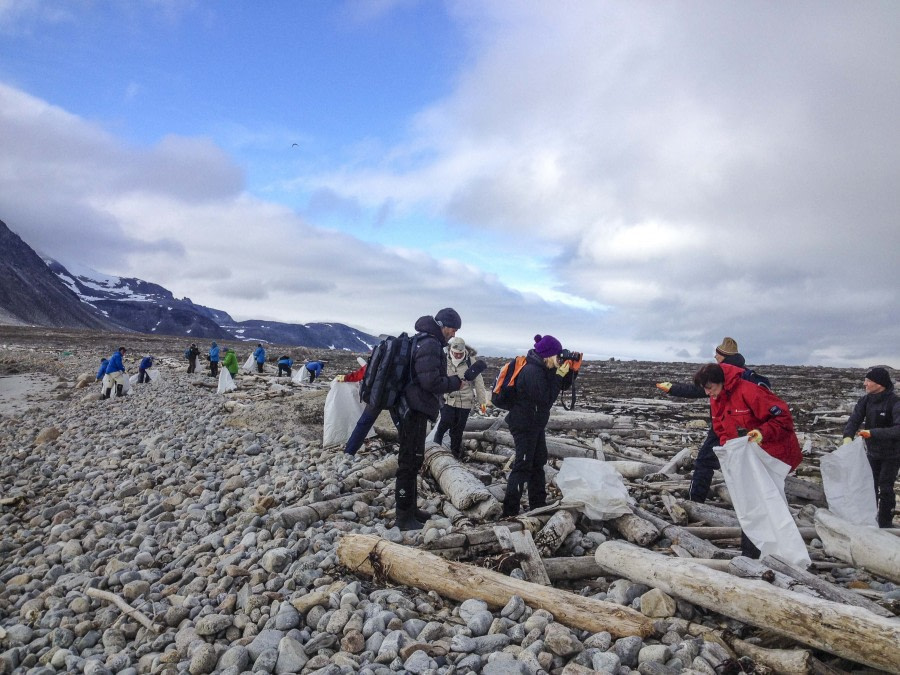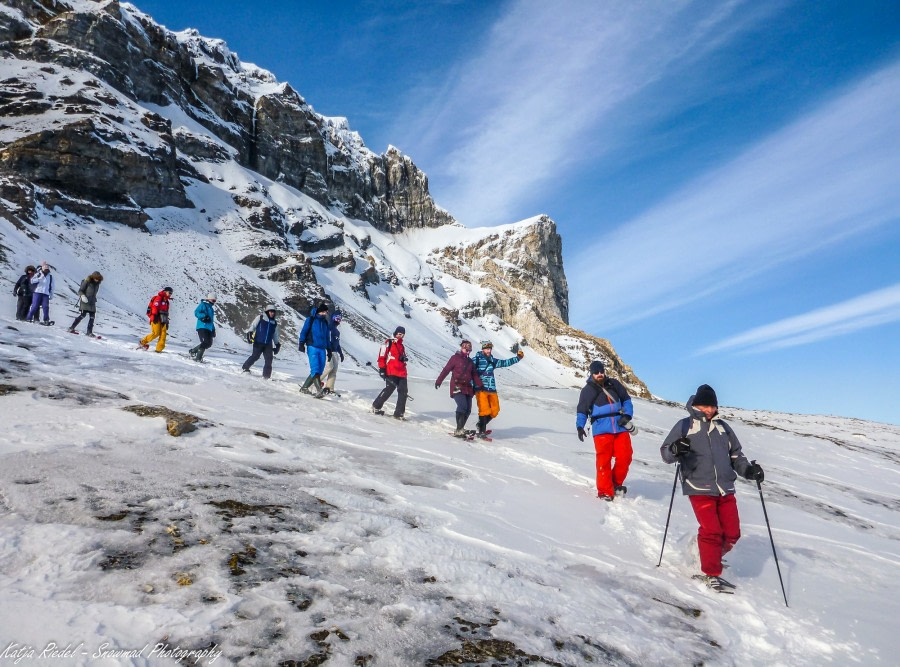 8 Days/7 Nights
8 Days/7 Nights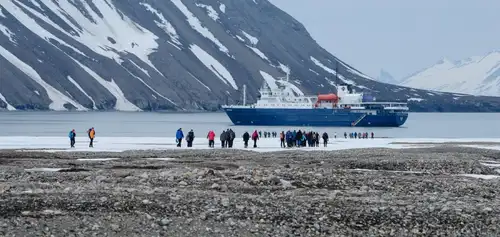
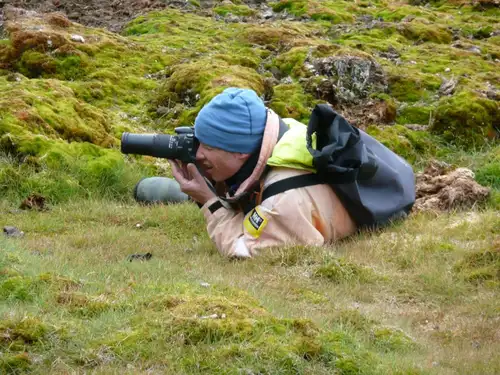
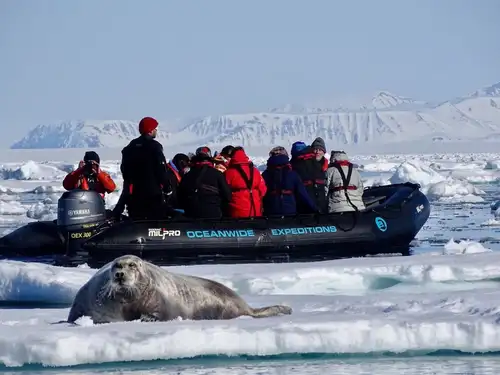
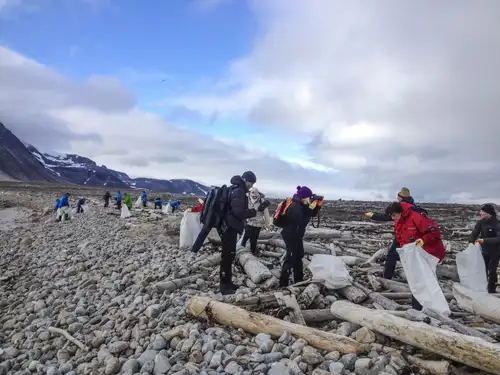
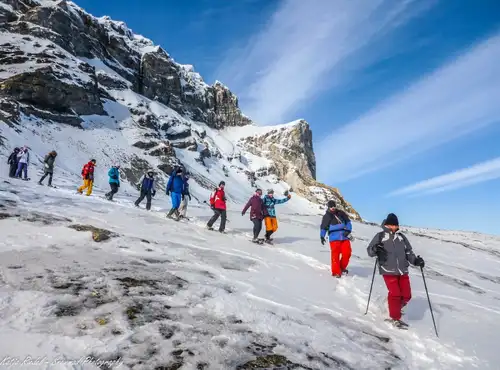
Note: All itineraries are for guidance only. Programs may vary depending on ice, weather, and wildlife conditions. Landings are subject to site availabilities, permissions, and environmental concerns per AECO regulations.
Our Basecamp cruises focus on land and near-shore activities with minimal disturbance to local wildlife. If time and conditions permit, the expedition team will also look for wildlife opportunities whenever possible.
By definition, a basecamp is a temporary camp from which expeditions or other outdoor activities can be carried out. During our designated Basecamp cruises, the ship navigates to carefully chosen areas around North Spitsbergen, staying in fewer locations than during our regular trips so that it can serve as a comfortable hub for multiple outdoor activities.
Hikers can embark on vigorous walks in the backcountry, photographers can capture the dramatic surroundings in pictures, and kayakers can explore waterways through which the ship cannot always sail. Passengers who do not wish to engage in these activities can enjoy Zodiac excursions and easy-to-moderate shoreline walks that focus on wildlife.
All activities are free of charge.
Cleaning the shores of Spitsbergen
Interested in doing something good for the environment?
We welcome you to participate in our ongoing effort to remove plastic waste and other rubbish from the shores of Spitsbergen.
Garbage from the ocean, such as fishing gear and plastic litter, piles up on these shores. This litter is hazardous to the animals, which get entangled in fish nets and sometimes ingest micro-plastics that can lead to starvation and suffocation.
Supported by AECO and the governor of Spitsbergen, we enjoy cleaning the beaches of Svalbard with our passengers. All participants will be assisted by our guides and provided with collection bags. About 50 passengers will clean in the morning while the other 50 have their excursion in another area. Then in the afternoon, the groups switch roles. And if we cannot clean a certain area because of roaming bears or other concerns, we will find an alternate area.
Largest town, biggest island
You touch down in Longyearbyen, the administrative center of Spitsbergen, the largest island of the Svalbard archipelago. Enjoy strolling around this former mining town, whose parish church and Svalbard Museum make for fascinating attractions. Though the countryside appears stark, more than a hundred species of plant have been recorded in it. In the early evening the ship sails out of Isfjorden, where you might spot the first minke whale of your expedition.
Kongsfjorden and Blomstrandhalvøya
On the first day of our activity program, we will slowly ease into things. Blomstrandhalvøya is located on the northern side of the fjord, which will offer shelter and room to change plan in case the weather changes. In the afternoon, you visit Ny Ålesund, one of the northernmost settlements on Earth. Once a mining village served by the world’s most northerly railway – you can still see its tracks – Ny Ålesund is now a research center.
Close to the community is a breeding ground for barnacle geese, pink-footed geese, and Arctic terns. And if you’re interested in the history of Arctic exploration, visit the anchoring mast used by polar explorers Amundsen and Nobile in their airships, Norge (1926) and Italia (1928). In the evening, we head north along the west coast and spend the night in the sheltered surroundings of Krossfjorden.
Exploring the North West
Next to our activities, we will next head toward Amsterdamoya, where you have the chance to hike past the remains of a 17th-century whaling station. You can also enjoy the beautiful panorama of Smeerenburgsleta. In the afternoon, we make for the islands around Fair Haven.
Rugged Raudfjorden
At Raudfjorden, on the north coast of Spitsbergen, you can take in an expansive fjord spilling with glaciers – and maybe even visited by ringed and bearded seals. The cliffs and shoreline of this fjord also support thriving seabird colonies, rich vegetation, and the possibility of polar bears. Here we will find the right balance between safe activities and wildlife watching.
The stunning sights of Liefdefjorden
Depending on the weather, you could sail into Liefdefjorden and cruise within sight of the 5-kilometer-long (3.1 miles) face of Monaco Glacier. The waters in front of this glacier are a favorite feeding spot for thousands of kittiwakes, and the base of the ice is a popular polar bear hunting ground. If ice conditions prevent sailing here early in the season, we may use an alternate route along the west coast of Spitsbergen. Near the area of Texas Bar and Hornbaekpollen, there are also some great hikes.
North Spitsbergen splendors
This is our reserve day for activities around North Spitsbergen. Weather and wildlife permitting, we will choose the right location for another day of splendid outdoor adventures.
Forlandsundet or St. Johns Fjord
Forlandsundet, between the main island of Spitsbergen and the narrow Prins Karls Forland, is a place of great beauty and fascinating wildlife. Walruses sometimes haul out here, and seabirds can be found around Fuglehuken. You may also see walrus populations around Sarstangen and Poolepynten. Alternatively, we might sail into St. Johns Fjord or south to the mouth of Isfjorden, landing at Alkhornet. Seabirds nest on these cliffs, Arctic foxes search below for fallen eggs and chicks, and reindeer graze the sparse vegetation. We will arrive in Longyearbyen later that night.
There and back again
Every adventure, no matter how grand, must eventually come to an end. You disembark in Longyearbyen, taking home memories that will accompany you wherever your next adventure lies.
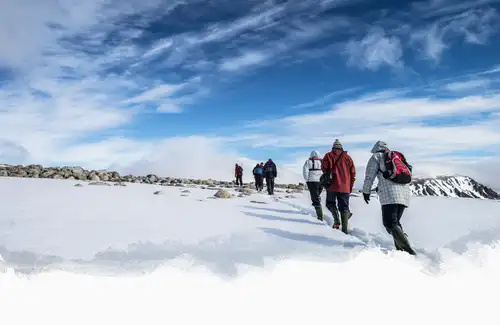
Hiking the Surreal Terrain of the Arctic and Antarctica
There's no better way to explore a new area than on foot. We offer a variety of hiking expeditions for all levels, from casual walkers to hard-core enthusiasts.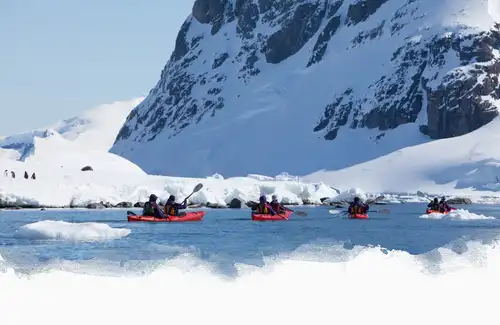
Explore the Arctic and Antarctic Coastline in a Kayak
Even after exploring shores, mountains, and spotting wildlife, there’s a whole world to discover on the water. Polar kayaking offers a unique way to experience the blue-and-white beauty of the polar seas, visiting stunning ice formations and waterways too small for our ships.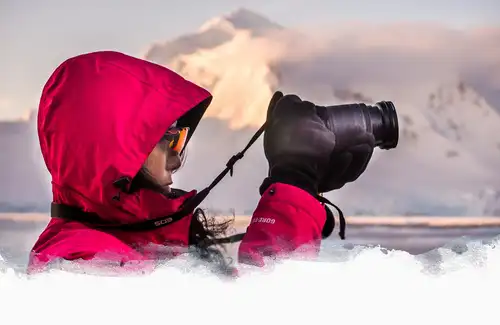
Join Our Expert-Led Photography Workshops
Visiting the polar regions is an indescribable experience. Our photography workshops help you capture incredible photos to complement your descriptions. On select voyages, professional photographers assist you in getting the best shots with your camera equipment through our free photo workshop activity.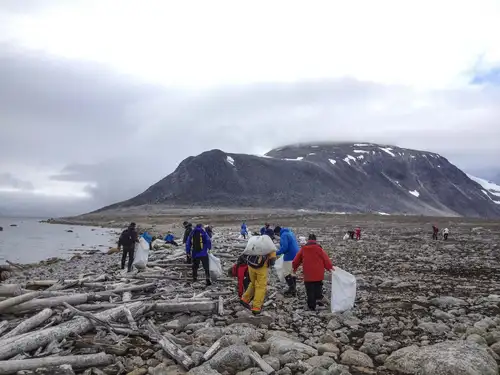
Contributing by Cleaning Up
Clean Up Svalbard is an initiative to remove coastal waste, launched by the governor of Svalbard in collaboration with AECO, the Association of Arctic Expedition Cruise Operators.










































































- Flights to the embarkation point and from the disembarkation point.
- Pre- and post- land arrangements.
- Passport and visa expenses.
- Meals ashore.
- Personal health Insurance for Medical, Accident and Repatriation/Evacuating.
- All personal expenses, including but not limited to laundry services, bar beverages, and excess internet usage charges.
- The customary gratuity at the end of the voyages for stewards and other service personnel aboard (guidelines will be provided).
- Voyage aboard the indicated vessel
- All meals throughout the voyage aboard the ship including snacks, coffee and tea.
- All shore excursions and activities throughout the voyage by Zodiac.
- Program of lectures by noted naturalists and leadership by experienced expedition staff.
- Free use of rubber boots and snowshoes.
- Transfers and baggage handling between the airport, hotels and ship only for those passengers on the group flights to and from Longyearbyen.
- All miscellaneous service taxes and port charges throughout the programme.
- AECO fees and governmental taxes.
- Comprehensive pre-departure material.
- That is hard to say. It depends on the weather and constraints of time and distance. Depending on the voyage, you may spend several days aboard the ship, followed by a series of landings, each several hours long. On some cruises, you land two or three times every day. During our time at the high latitudes, we will have almost continuous daylight, which means we may schedule excursions before breakfast, after dinner, or in the middle of the night. Often the light for photography is best at these times. We would like to show you as much as possible, but we also want to leave it up to you to skip an excursion.
- Nexta Expeditions does not allow the use of recreational UAVs/quadcopters/drones during its voyages. This applies both on the ship and off, regardless of any permits held by the passenger. The International Association of Antarctic Tour Operators (IAATO) has prohibited the recreational use of UAVs/quadcopters/drones on member vessels, Zodiac boats, and during scheduled landings. Also, the Government of South Georgia and the South Sandwich Islands have issued a ban on recreational use of these devices in their territories. The Association of Arctic Expedition Cruise Operators (AECO) has also prohibited the recreational use of UAVs/quadcopters/drones on member vessels and during all cruise excursions. As a full member of both IAATO and AECO, Nexta Expeditions supports their prohibition on the recreational use of drones in order to minimize environmental impact and enhance passenger experience.
- When you make a confirmed reservation, we require a 40% deposit. But if the reservation is made within two months prior to departure, the full price of the voyage is due at the time of booking.
- No, you are not able to change currency on board.
- This depends on what you want to experience at Spitsbergen. In case you want to experience the Polar night or the Aurora Borealis, November to February is the best time to travel to Spitsbergen. Do you want to see the midnight sun and enjoy boat trips, kayaking or hiking? Then the best time to visit Spitsbergen is around May until September. This is the summer period of Spitsbergen.
- The weather in Spitsbergen differs per area and location. Although snow can occur throughout the year in Svalbard, the North Atlantic Current helps provide Svalbard with warmer temperatures than many other areas within similar latitudes. However, strong winter breezes, low pressure and the combination of wet sea air and cold polar air can lead to rapidly changing weather conditions, especially during the winter months. During the winter season, the temperature in Spitsbergen can can drop to -16 to -12 degrees Celsius (3 to 10 degrees Fahrenheit). Adding in the wind chill factor means the weather can feel much colder. July is the warmest month of the year with an average temperature between 3 and 8 degrees Celsius (37 to 46 degrees Fahrenheit). We therefore recommend that you bring a variety of warm clothes for your Spitsbergen cruise.
- The Ortelius was built in Poland in 1989 for the Russian Academy of Science.
- There are in total 50 cabins at the Ortelius. 4 quadruple cabins with bunk beds. 26 twin porthole cabin with 2 single berths. 12 twin cabins with windows and 2 lower berths. 2 twin deluxe cabins with windows and 2 single lower berths. 6 superior cabins with double beds. All cabins are spacious outside cabins with a minimum of two portholes or windows per cabin and all cabins have a private shower and toilet.
You May Also Like


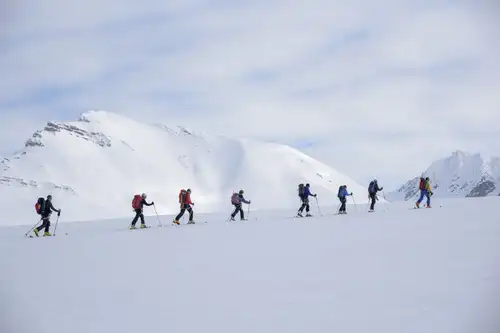
Alpine Peaks of Spitsbergen, Ski & Sail
 8 Days / 7 Nights
8 Days / 7 Nights
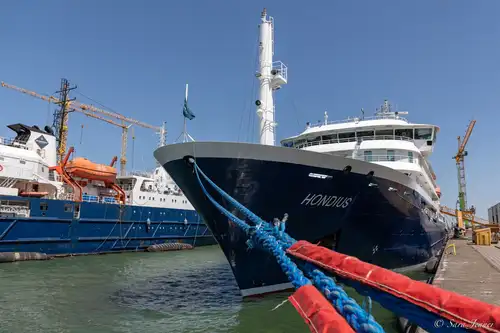
Vlissingen to Aberdeen
 3 Days / 2 Nights
3 Days / 2 Nights
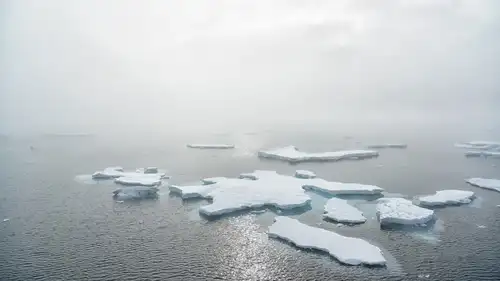
19 Days Extensive Arctic Ocean - North Spitsbergen Explorer
 19 Days / 18 Nights
19 Days / 18 Nights

Arctic Ocean - Aberdeen, Fair Isle, Jan Mayen, Ice edge, Spitsbergen, Birding
 12 Days / 11 Nights
12 Days / 11 Nights
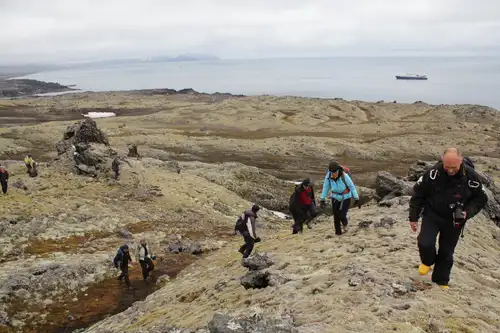
Arctic Ocean - Fair Isle, Jan Mayen, Ice edge, Spitsbergen, Birding
 10 Days / 9 Nights
10 Days / 9 Nights
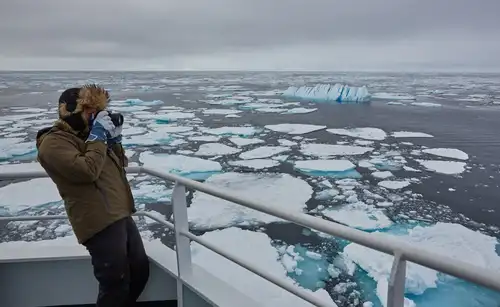
17 Days Extensive Arctic Ocean - North Spitsbergen Explorer
 17 Days / 16 Nights
17 Days / 16 Nights
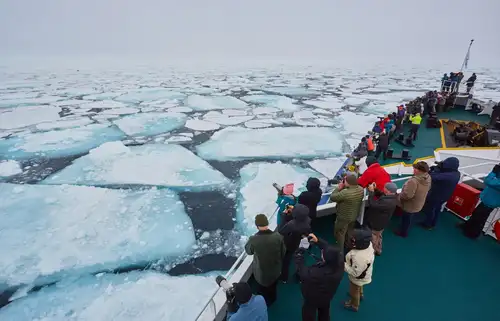
North Spitsbergen Explorer - Versatile landscapes, sea ice & wildlife
 8 Days / 7 Nights
8 Days / 7 Nights
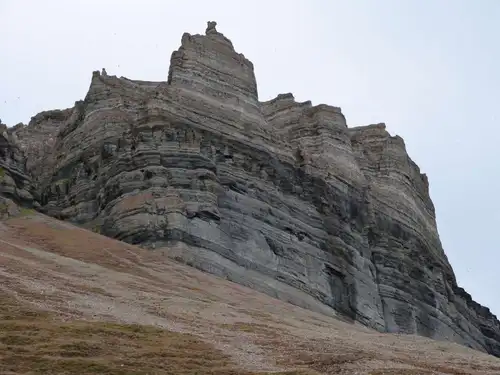
North Spitsbergen, Arctic Summer
 11 Days / 10 Nights
11 Days / 10 Nights
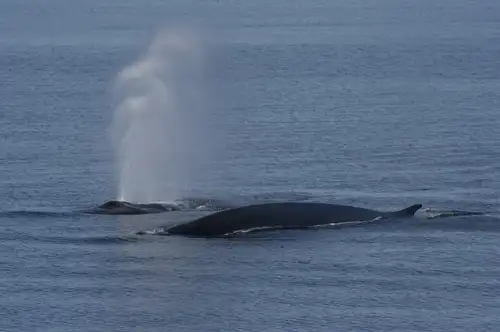
North Spitsbergen Explorer - Polar Bears, Bowhead Whales & more
 8 Days / 7 Nights
8 Days / 7 Nights

North Spitsbergen Explorer - Into the pack ice - Polar Bear Special
 8 Days / 7 Nights
8 Days / 7 Nights
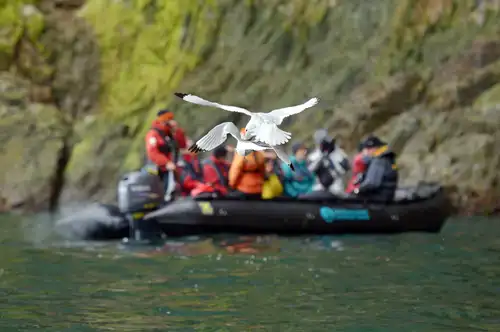
North Spitsbergen Explorer - Versatile landscapes, sea ice & wildlife - Summer Solstice
 8 Days / 7 Nights
8 Days / 7 Nights
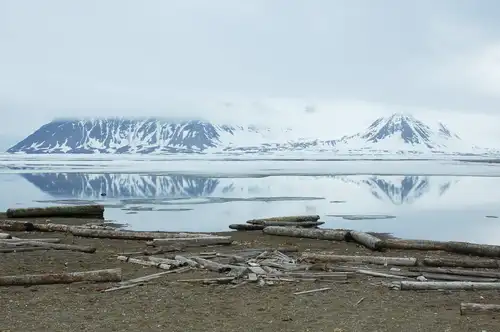
North Spitsbergen, Arctic Summer - Summer Solstice
 11 Days / 10 Nights
11 Days / 10 Nights
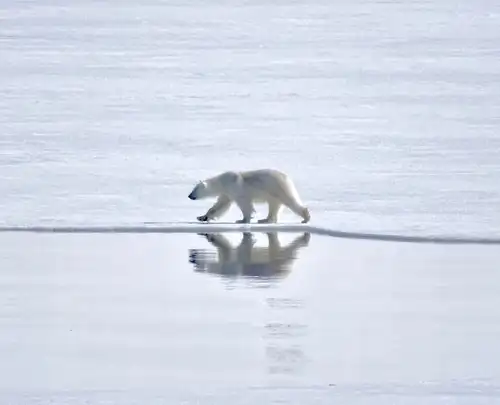
North Spitsbergen Explorer - Into the pack ice - Summer Solstice - Polar Bear Special
 8 Days / 7 Nights
8 Days / 7 Nights
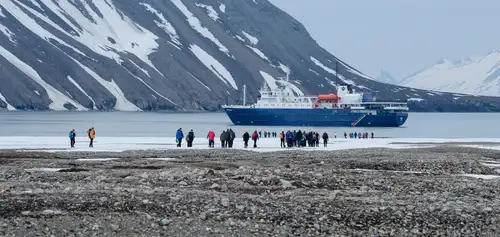
North Spitsbergen Basecamp - Free kayaking, Hiking, Photo Workshop, Cleaning the Shores
 8 Days / 7 Nights
8 Days / 7 Nights
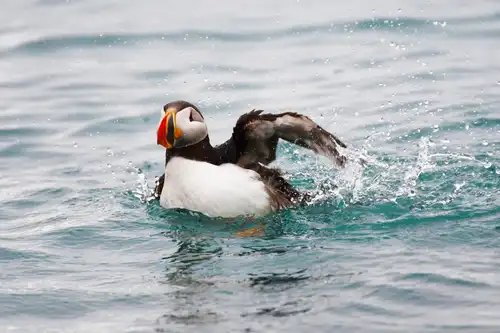
Around Spitsbergen, In the realm of Polar Bear & Ice
 10 Days / 9 Nights
10 Days / 9 Nights
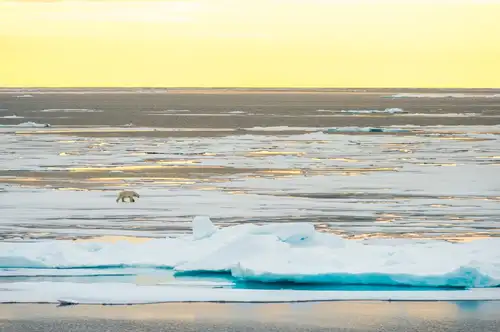
Around Spitsbergen and Nordaustlandet
 10 Days / 9 Nights
10 Days / 9 Nights

Spitsbergen - Northeast Greenland - Aurora Borealis, Including Long Hikes
 14 Days / 13 Nights
14 Days / 13 Nights

North Sea - Vlissingen to Aberdeen
 3 Days / 2 Nights
3 Days / 2 Nights

Arctic Ocean - Fair Isle, Jan Mayen, Ice Edge, Spitsbergen, Birding
 10 Days / 9 Nights
10 Days / 9 Nights

North Spitsbergen - Arctic Spring , Hike & Sail
 8 Days / 7 Nights
8 Days / 7 Nights

Arctic Ocean – Northwest Iceland - Pack Ice – Grimsey – Jan Mayen – Ice Edge – Spitsbergen
 16 Days / 15 Nights
16 Days / 15 Nights

22 Days Extensive Arctic Ocean – Northwest Iceland - Spitsbergen Explorer
 23 Days / 22 Nights
23 Days / 22 Nights
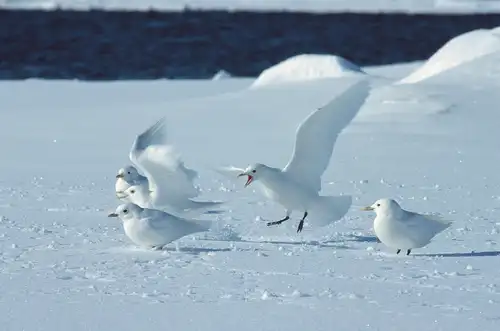
North Spitsbergen - Arctic Spring , Birding Special
 11 Days / 10 Nights
11 Days / 10 Nights

Arctic Ocean - Jan Mayen, Ice edge, Spitsbergen, Birding
 9 Days / 8 Nights
9 Days / 8 Nights

Arctic Ocean - Fair Isle, Jan Mayen, Ice edge, Spitsbergen, Birding - Summer Solstice
 10 Days / 9 Nights
10 Days / 9 Nights

North Spitsbergen Basecamp – Summer Solstice - Free Kayaking, Hiking, Photo Workshop, Diving (supplemented)
 8 Days / 7 Nights
8 Days / 7 Nights

North Spitsbergen - Arctic Summer
 11 Days / 10 Nights
11 Days / 10 Nights

East Spitsbergen - Home of the Polar Bear, Including Long Hikes & Cleaning the Shores
 8 Days / 7 Nights
8 Days / 7 Nights

North Spitsbergen - In Pursuit of the Bowhead Whale
 10 Days / 9 Nights
10 Days / 9 Nights

Spitsbergen - Northeast Greenland, Fly & Sail
 20 Days / 19 Nights
20 Days / 19 Nights

Around Spitsbergen incl. Nordaustlandet
 10 Days / 9 Nights
10 Days / 9 Nights
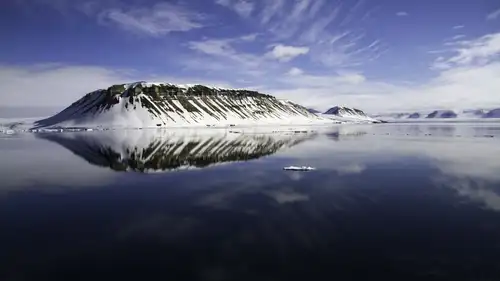
The Ice-Jewelled Geology of Spitsbergen
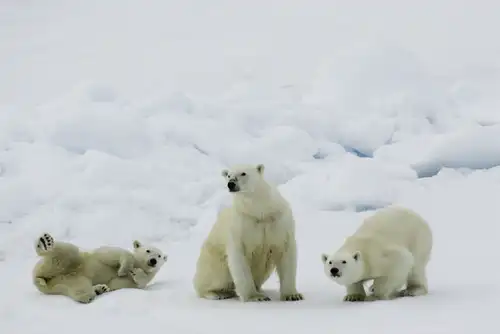
Polar bear encounter in Spitsbergen
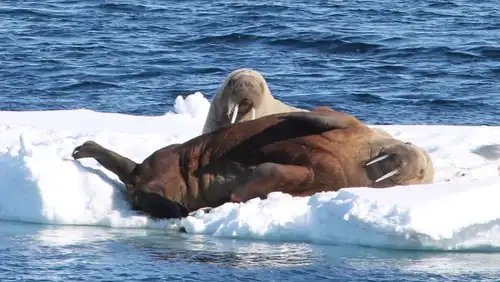
Svalbard’s 12 Most Iconic Animals
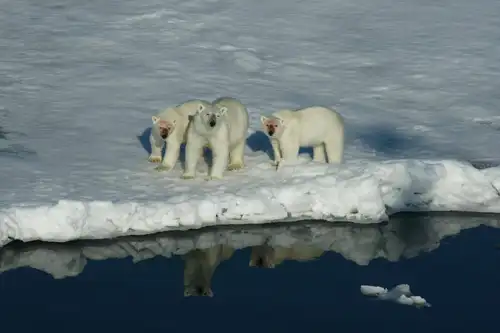
Polar Bear Primer: Eight Facts About the Arctic Wanderer
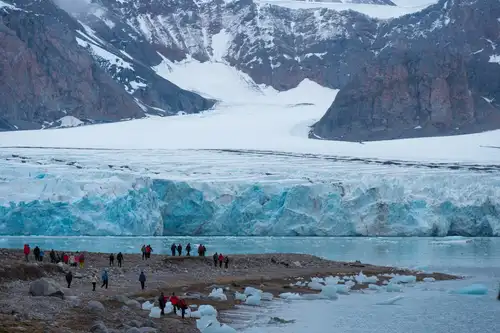
16 Conversation-Starting Svalbard Facts
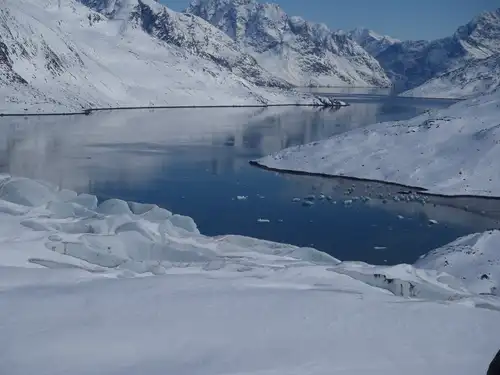
8 Scientific Wonders of the Arctic
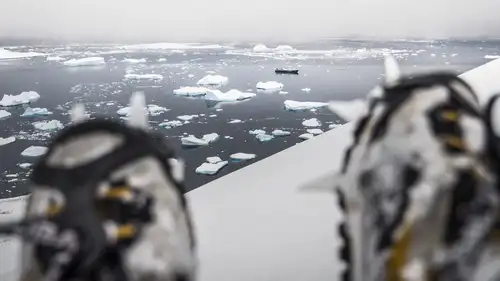
Arctic and Antarctic Basecamp Cruises – Choose Your Own Adventure
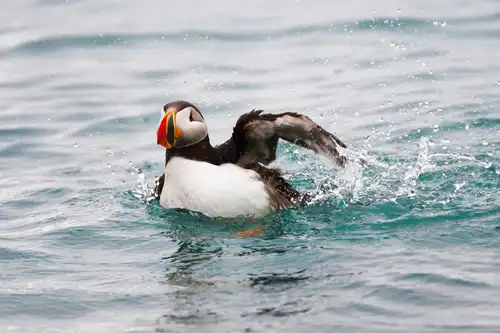
Puffins: Clown Birds of the Atlantic
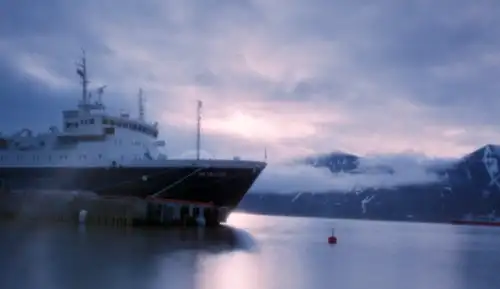
Solargraphy & Pin Hole photography in the Arctic

Amphibian, reptiles and herbivore mammals in the Arctic
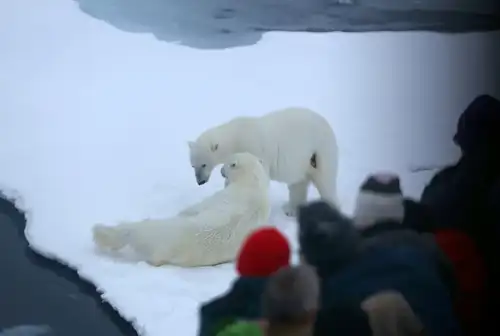
The Pack Ice and Polar Bears of North Spitsbergen
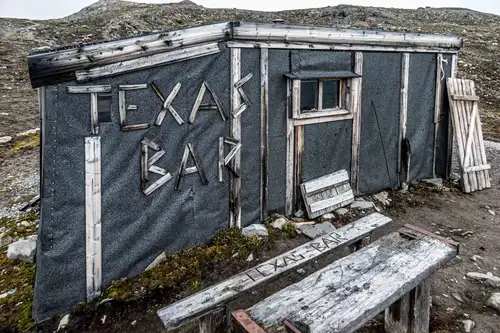
Svalbard’s Texas Bar
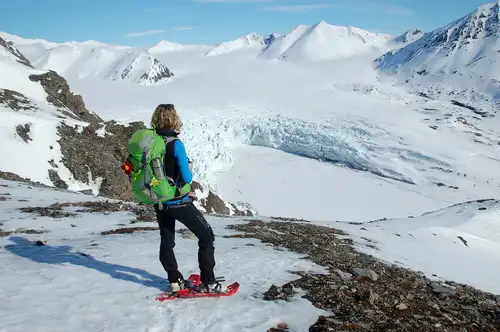
Arctic on Foot: Hiking and Snowshoeing the Far North
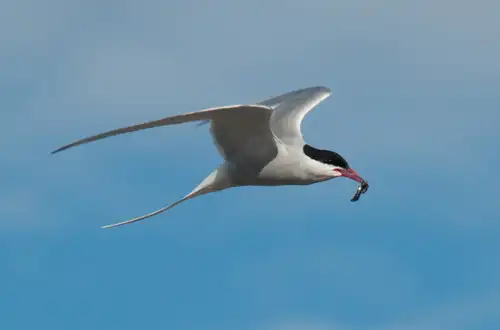
Birding Opportunities Abound in Spitsbergen
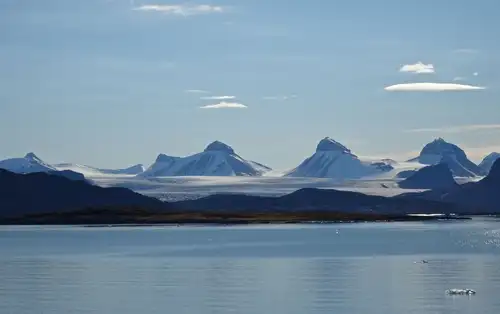
The Arctic Borderland of Kongsfjorden, Svalbard
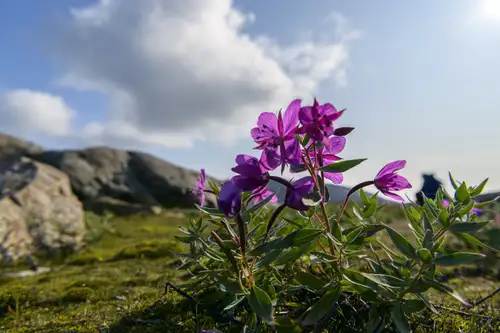
Arctic Flowers, Trees, and Other Plant Life
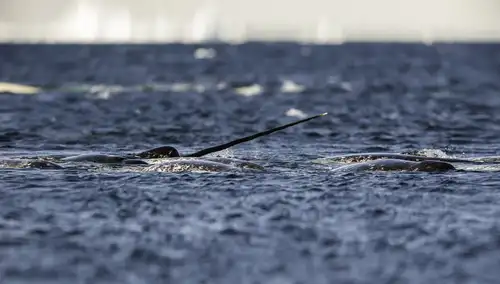
Narwhals: the Aquatic Unicorns of the Arctic
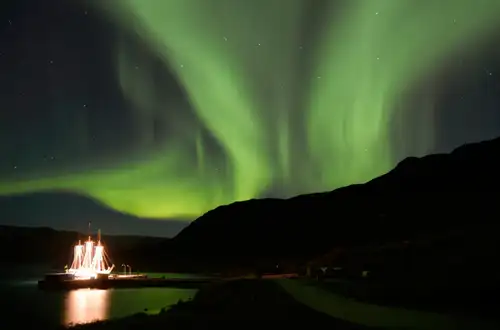
The Northern Lights dancing across the skies
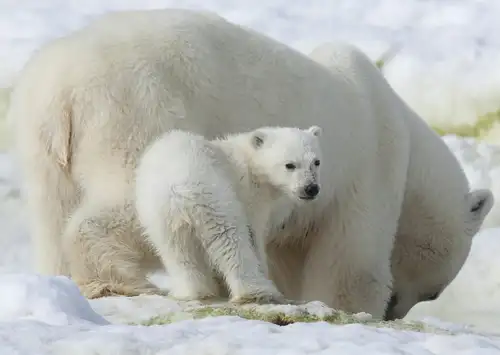
Arctic Icon: 10 Facts about the Polar Bear
